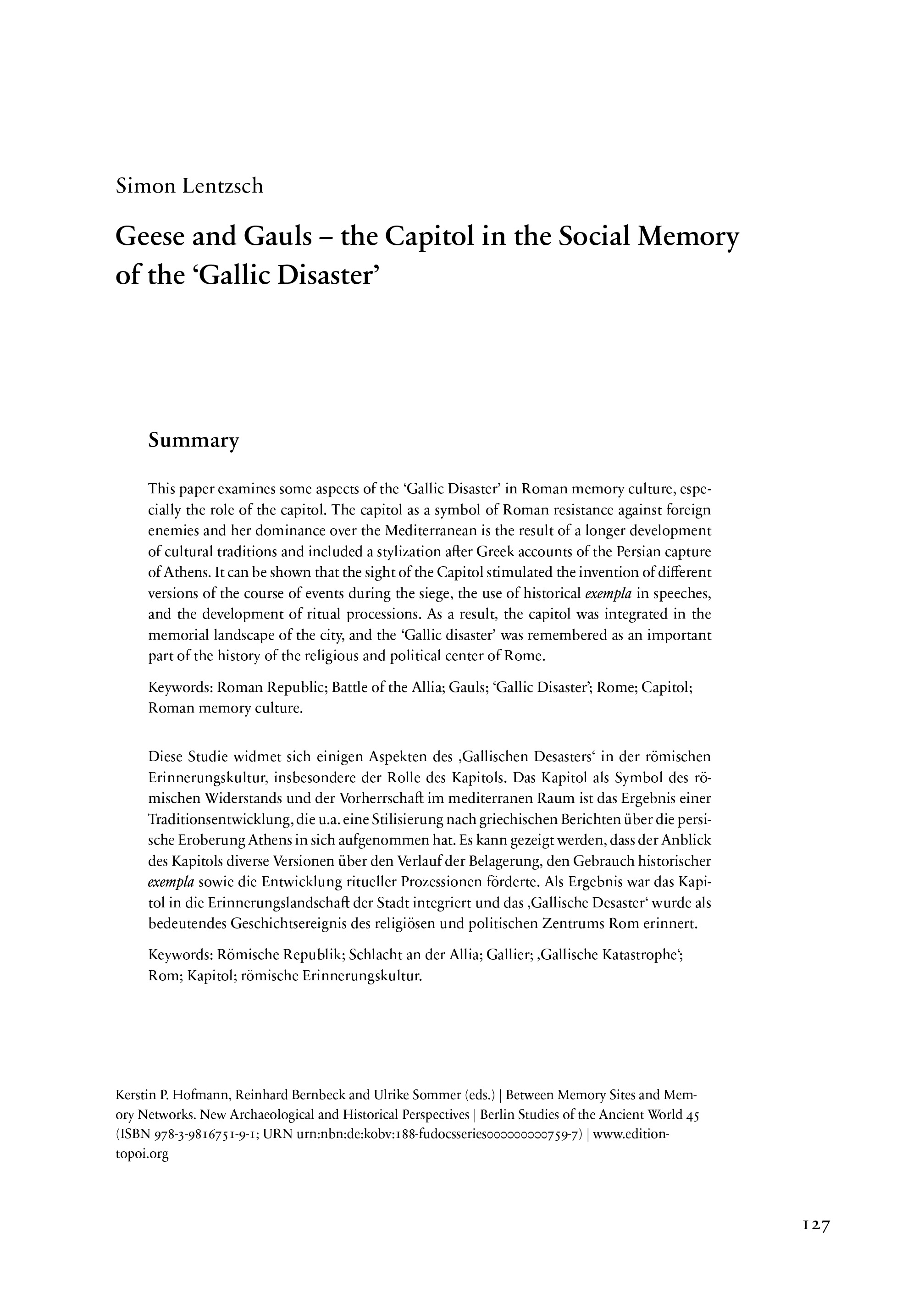Geese and Gauls – the Capitol in the Social Memory of the ‘Gallic Disaster’
This paper examines some aspects of the ‘Gallic Disaster’ in Roman memory culture, especially the role of the capitol. The capitol as a symbol of Roman resistance against foreign enemies and her dominance over the Mediterranean is the result of a longer development of cultural traditions and included a stylization after Greek accounts of the Persian capture of Athens. It can be shown that the sight of the Capitol stimulated the invention of different versions of the course of events during the siege, the use of historical exempla in speeches, and the development of ritual processions. As a result, the capitol was integrated in the memorial landscape of the city, and the ‘Gallic disaster’ was remembered as an important part of the history of the religious and political center of Rome.
Diese Studie widmet sich einigen Aspekten des ‚Gallischen Desasters‘ in der römischen Erinnerungskultur, insbesondere der Rolle des Kapitols. Das Kapitol als Symbol des römischen Widerstands und der Vorherrschaft im mediterranen Raum ist das Ergebnis einer Traditionsentwicklung, die u.a. eine Stilisierung nach griechischen Berichten über die persische Eroberung Athens in sich aufgenommen hat. Es kann gezeigt werden, dass der Anblick des Kapitols diverse Versionen über den Verlauf der Belagerung, den Gebrauch historischer exempla sowie die Entwicklung ritueller Prozessionen förderte. Als Ergebnis war das Kapitol in die Erinnerungslandschaft der Stadt integriert und das ‚Gallische Desaster‘ wurde als bedeutendes Geschichtsereignis des religiösen und politischen Zentrums Rom erinnert.

